The Ocean Cleanup aims to strip 70 million kilos of plastic from the sea in 10 years
A 100-kilometre array of floating barriers designed by a 20-year-old inventor aims to clear the oceans of waste plastic, and is one of the projects shortlisted for this year's Designs of the Year award (+ slideshow).
Dutch engineering student Boyan Slat created The Ocean Cleanup concept with the aim of clearing the oceans of their plastic gyres – floating islands made of millions of pieces of waste that accumulate where currents converge.
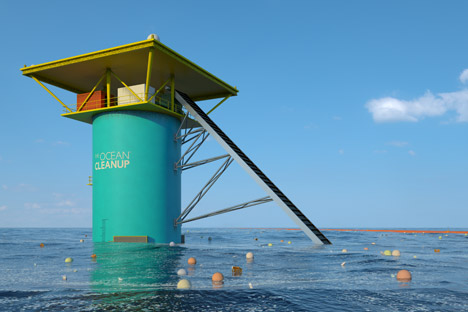
There are currently five major gyres, containing millions of pieces of plastic per square kilometre that are constantly moving in a rotating formation. The gyres contribute to the estimated 500 million kilos of plastic waste currently floating in the world's oceans.
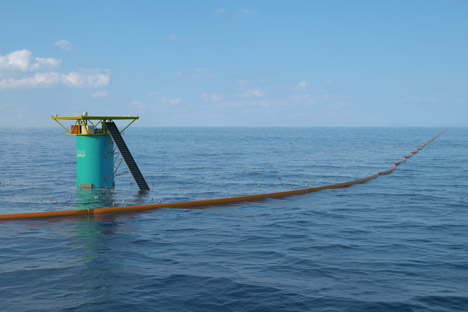
Previous proposals for removing this waste have involved using nets and basic trawling operations, but have been considered too expensive and possibly damaging to wildlife.
Slat's proposed solution involves 100 kilometres of floating filters that stay static, rather than being pulled through the water, and act as a barrier to collect waste.
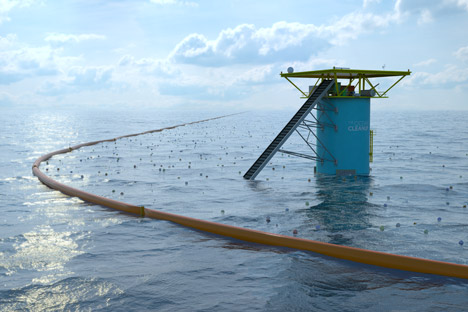
"A cleanup of our oceans has always been deemed impossible, costing billions of dollars and thousands of years," said a statement from Slat's The Ocean Cleanup organisation.
"[Our] solution is a concept to passively clean the oceans of plastic in just several years' time. The concept would utilise the natural currents to let the oceans clean themselves, in what would become the largest cleanup in history."
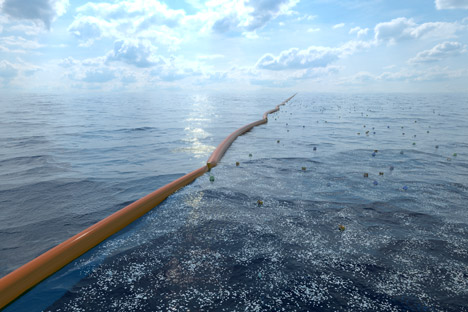
Described as "the largest structure ever deployed on the oceans", the barriers would be arranged in two 50-kilometre arms connected to a central platform, forming a V-shape.
These would only filter the top three metres of water, as Slat's studies found that this was where the highest concentration of plastic rubbish could be found in the world's oceans. The main currents run deeper than this, reducing the potential for "bycatch" – fish and other ocean life that get caught and die.
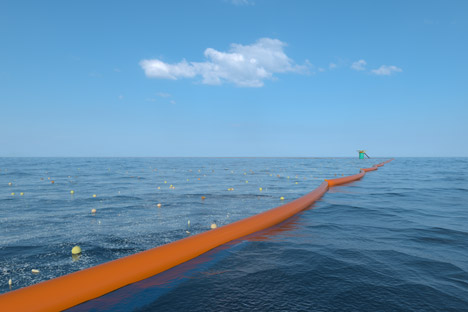
As plastic is caught in the array, the motion of the water would push it naturally towards the platform, where the debris can be extracted and sorted.
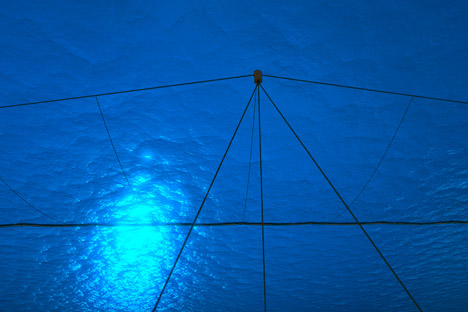
"The Ocean Cleanup estimates the cost of removing one kilogram of plastic at €4.53," said the organisation. "This is 33 times cheaper than conventional ocean cleanup methods, while also being an estimated 7,900 times faster."
"Almost half of the plastic within the North Pacific Gyre – about 70,000,000 kilograms – can be removed within 10 years," it added.
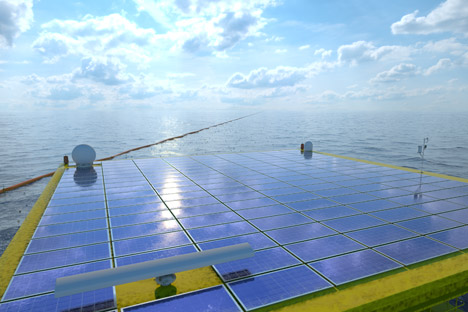
The platform would have a 10,000-metre-cubed capacity, and would be emptied every one and a half months. Its processing capabilities would be powered by energy collected using a rig of 162 solar panels.
According to Slat, a large amount of the plastic collected could then be recycled or turned into oil products using a chemical process called pyrolysis.
Slat first came up with the idea in 2011 when he was 16, after a diving holiday in Greece where he saw a huge amount of plastic waste in the water. He developed this into a school project, which was given an award by Delft's University of Technology.
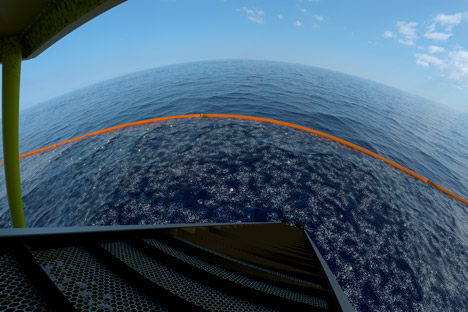
Slat began a degree in aerospace engineering at Delft University in 2012, but wanted to continue working on The Ocean Cleanup, so set up a foundation to develop the scheme further. Six months into his degree, he put his studies on hold to pursue the project full-time.
In 2013 a talk that he had given at a TED satellite event went viral, creating a wave of public interest that allowed Slat to raise the funds to launch a research expedition to the North Atlantic Gyre, followed by a large-scale test of his design near the Azores Islands last year.
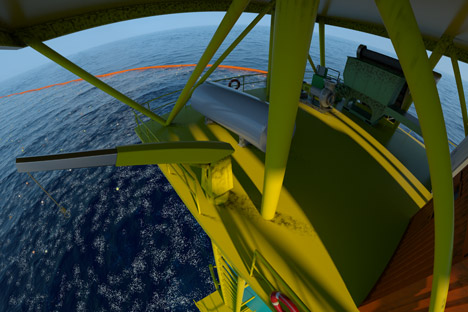
His organisation now has over 100 volunteers, including scientists and engineers, and is supported by 15 other institutions.
A crowdfunding campaign has now been launched to pay for the next phase of the project, which includes a "series of upscaled tests, oceanographic field research and in-depth engineering to eliminate uncertainties and optimise technical design."
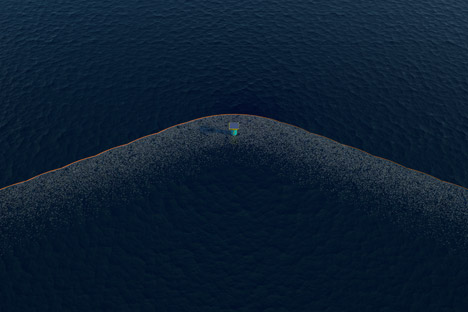
Slat's organisation plans to launch a full-scale pilot of The Ocean Cleanup in the next three years.
The Ocean Cleanup is one of 76 projects shortlisted for the Design Museum's Design of the Year 2015 award and is currently part of the awards exhibition at the museum's home in Shad Thames, south London.